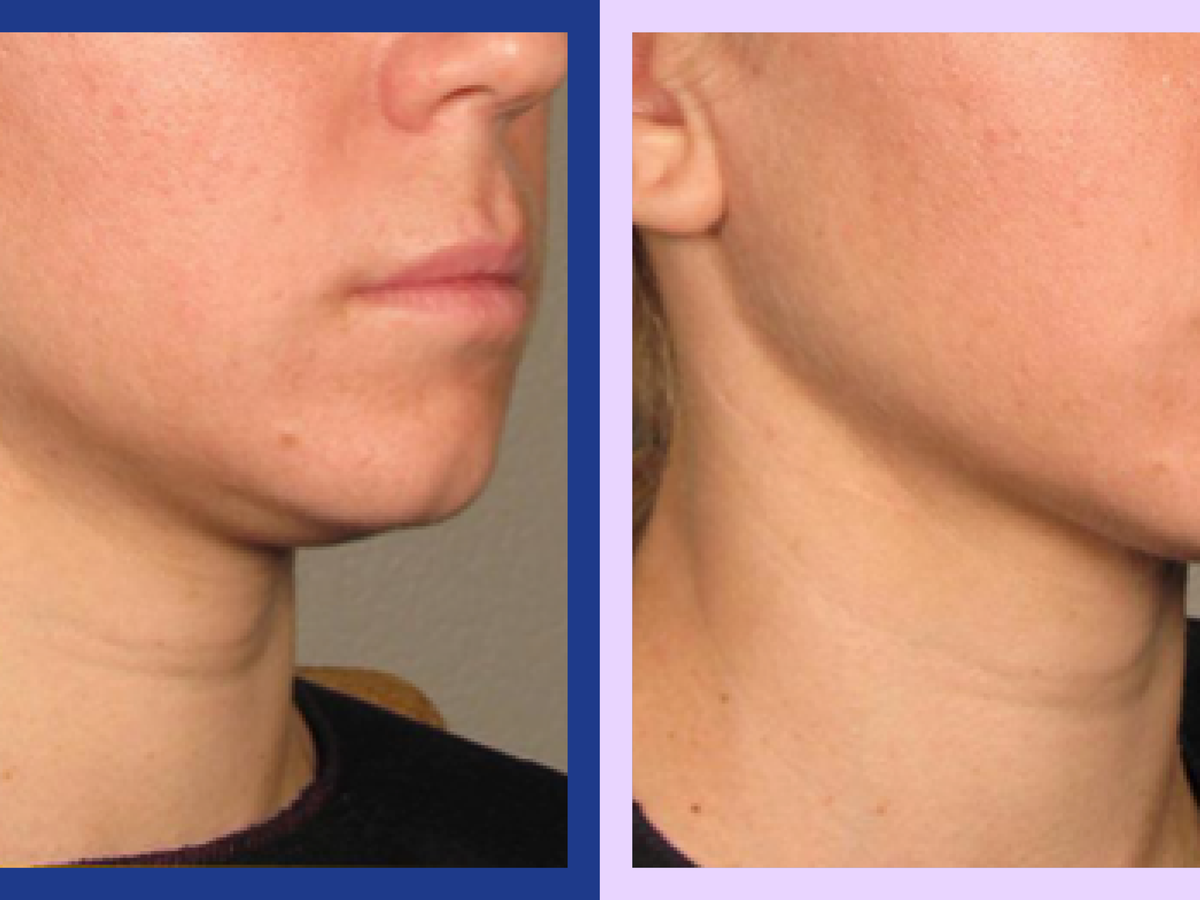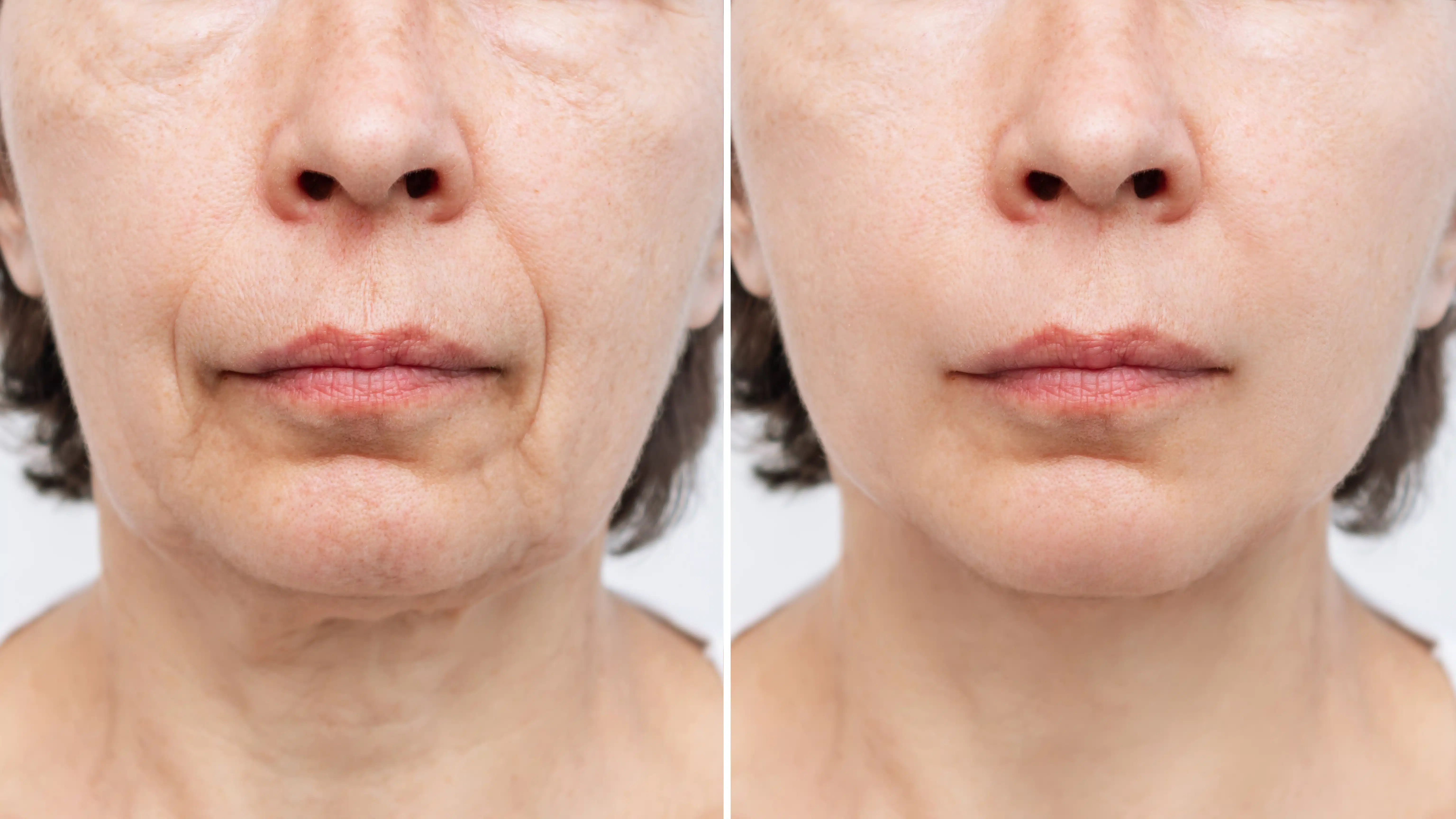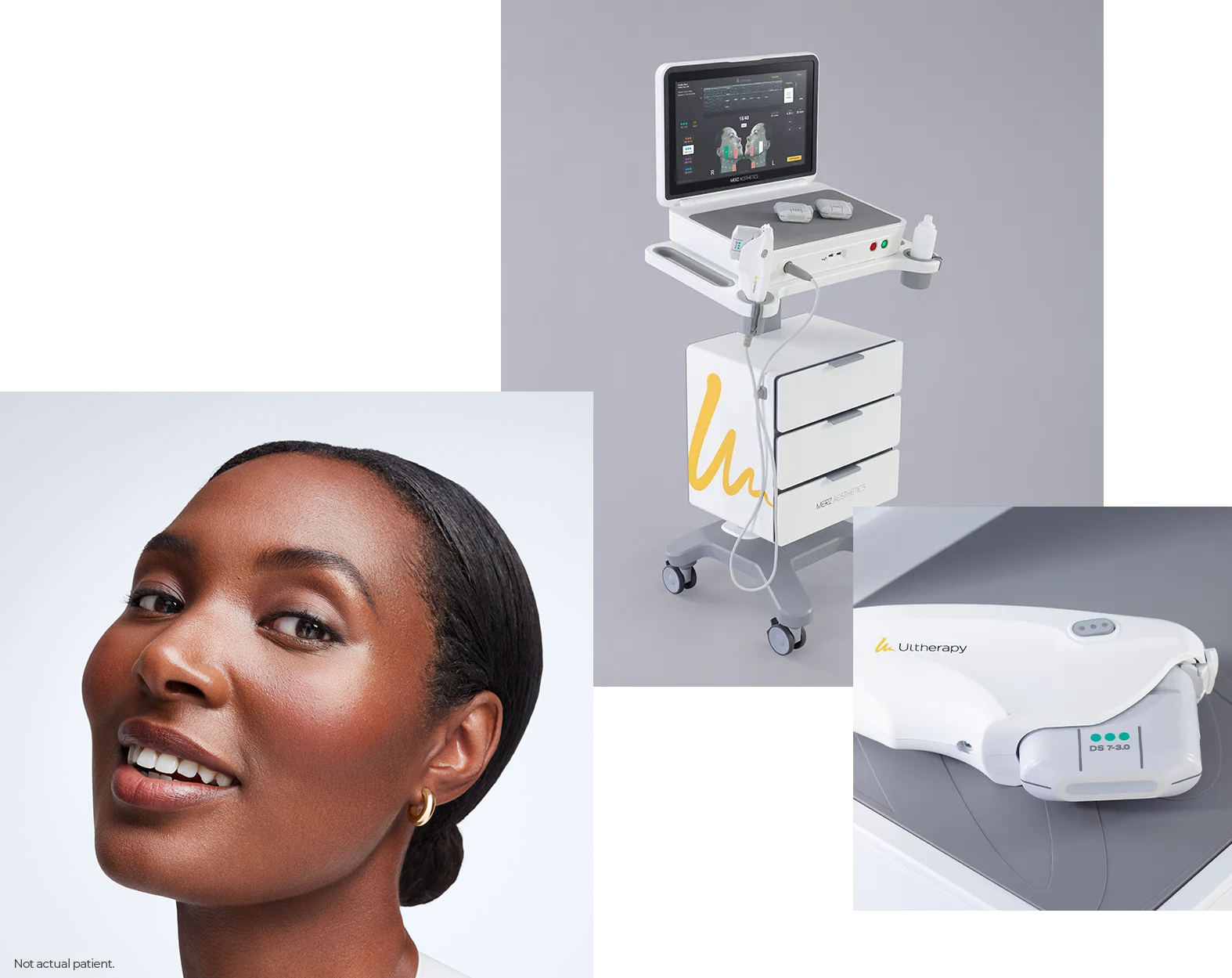Why Skin tightening treatment KL Works Skin Health
Why Ultherapy May Be Clinically Needed: Discovering the Reasons for a Non Surgical Lift
Ultherapy is acquiring interest as a feasible choice for individuals encountering skin laxity because of aging or details clinical conditions. This non-surgical treatment stimulates collagen manufacturing, supplying an option that prevents the recovery time connected with invasive procedures. As people seek to improve not just their look however also their total skin health and wellness, recognizing the situations that require Ultherapy's use comes to be vital. What factors add to its medical requirement?
Understanding Ultherapy: What It Is and Exactly how It Functions
Ultherapy, a non-invasive cosmetic procedure, uses ultrasound innovation to stimulate collagen manufacturing and advertise skin tightening up. By providing concentrated ultrasound energy deep right into the skin, it targets the foundational layers commonly attended to in medical facelifts. This procedure motivates the body's natural recovery feedback, resulting in steady lifting and tightening up of the skin over time.

Therapy sessions generally last in between 30 to 90 mins, depending upon the size of the area being dealt with. While results may not be quickly noticeable, perfect impacts usually show up within 2 to 3 months as collagen continues to establish. Ultherapy offers an engaging non-surgical choice for individuals looking for skin restoration without the demand for intrusive procedures.
The Aging Refine: Impacts on Skin Elasticity and Collagen
Aging inevitably brings adjustments that reduce skin elasticity and collagen manufacturing, resulting in noticeable indications of drooping and creases. As individuals age, the skin's capability to retain wetness decreases, leading to a drier and less durable surface. Collagen, a necessary protein in charge of skin framework, likewise lessens, causing the skin to shed its firmness and youthful appearance. Elements such as sunlight direct exposure, environmental toxins, and lifestyle options further accelerate this decrease in skin top quality.
This loss of elasticity and collagen creates a cascade of changes, including the formation of jowls, growing nasolabial folds up, and an overall sagging appearance. The skin's support group deteriorates, making it much more prone to the results of gravity. Consequently, several people seek interventions like Ultherapy to deal with these aging results, intending to recover a much more vibrant, tight look without the demand for intrusive surgeries.
Clinical Problems That May Advantage From Ultherapy
Ultherapy is significantly identified for its prospective benefits in attending to different clinical conditions. Individuals experiencing skin laxity, those in post-surgical recovery, and patients with persistent skin disease may locate this non-invasive treatment useful. By promoting collagen production, Ultherapy can improve skin suppleness and enhance total appearance for these groups.
Skin Laxity Problems
Skin laxity can be a significant problem for people experiencing various clinical problems that affect the integrity and elasticity of their skin. Conditions such as Ehlers-Danlos disorder, which interferes with collagen production, can result in premature skin aging and sagging. In addition, individuals with autoimmune conditions might experience skin changes that add to laxity. Hormone fluctuations, specifically throughout menopause, likewise play a duty in diminishing skin suppleness. Ultherapy, using ultrasound technology, targets the much deeper layers of skin, boosting collagen manufacturing and tightening up the affected locations. This non-invasive therapy might provide a practical option for those seeking to resolve skin laxity resulting from these medical conditions, boosting both appearance and self-confidence without the demand for medical intervention.
Post-Surgical Recuperation Aid
Post-surgical healing can often present obstacles, especially for individuals experiencing skin laxity as a result of surgical interventions. Ultherapy functions as a potential aid in this circumstance, using ultrasound technology to boost collagen production and improve skin rigidity without invasive procedures. Individuals that have gone through surgical procedures such as renovations, liposuction surgery, or various other body contouring treatments might locate that Ultherapy boosts their recovery by addressing uneven texture and laxity that can occur post-operation. This non-surgical approach can lead to boosted aesthetic outcomes, potentially reducing the requirement for extra medical treatments. It may help ease pain connected with the healing procedure, offering individuals a much more comprehensive recuperation experience. Ultherapy can be a valuable alternative in post-surgical care.
Chronic Skin Problem
For individuals enduring from persistent skin problem such as acne scars, rosacea, or laxity because of aging, non-invasive treatments may supply substantial alleviation and improvement. Ultherapy has arised as an appealing choice, utilizing ultrasound technology to promote collagen manufacturing deep within the skin. This process can improve skin structure and elasticity, addressing concerns like uneven complexion and sagging. Particularly, those with rosacea may experience minimized soreness and swelling, while clients with acne scars can profit from boosted skin level of smoothness and total look. Importantly, Ultherapy supplies a non-surgical option that minimizes healing time and dangers connected with invasive procedures, making it an attractive option for people seeking reliable management of chronic skin disease.
Emotional Impact of Sagging Skin and Aesthetic Issues
The emotional toll of aging typically manifests in the form of sagging skin, which can greatly impact a person's self-worth and overall psychological wellness. Lots of people connect younger looks with power and appearance, bring about sensations of insufficiency when confronted with visible indications of aging. This perceived decrease in elegance can cause social anxiousness, withdrawal from social communications, and a boosted preoccupation with one's appearance.
People may really feel compelled to look for aesthetic treatments to deal with these issues, as the desire to preserve a youthful appearance can come to be intertwined with personal identity. The psychological impacts of sagging skin might additionally cause anxiety or a decreased lifestyle. Non-surgical alternatives like Ultherapy emerge as possible remedies, intending not just to revitalize the skin yet likewise to restore confidence and a positive self-image, inevitably attending to the much deeper emotional ramifications of aging.
Comparing Ultherapy to Traditional Surgical Options
When comparing Ultherapy to standard medical choices, considerable differences arise in both cost-effectiveness and recovery time. Ultherapy deals a non-invasive method that usually leads to reduced costs and minimal downtime for patients. On the other hand, surgical lifts commonly need even more economic investment and a prolonged healing period.
Cost-Effectiveness of Ultherapy

Typical medical lifts often come with significant ahead of time costs and expanded healing times, Ultherapy provides an engaging alternative that can supply equivalent results at a fraction of the price. The typical price of a surgical facelift can range from $7,000 to $15,000, while Ultherapy therapies normally drop between $2,000 and $4,500, relying on the area treated and supplier knowledge. Furthermore, the lack of extensive pre-operative evaluations and post-operative treatment connected with Ultherapy even more adds to its cost-effectiveness. This method not only decreases economic stress but likewise enables clients to invest in other elements of their wellness and health. In this means, Ultherapy arises as an economically viable alternative for those looking for facial renewal without the problems of traditional surgery.
Healing Time Comparison
Recovery time is a considerable variable in the decision-making process for those thinking about cosmetic treatments. Ultherapy attracts attention as a non-surgical option that usually calls for minimal downtime. A lot of clients can go back to their everyday tasks almost promptly, experiencing view it only moderate soreness or swelling that typically fixes within a few hours. On the other hand, conventional medical alternatives, such as facelifts, often necessitate a lengthy recuperation period. Patients might encounter a number of weeks of swelling, bruising, and limited activity, with some returning to regular regimens occupying to 3 months. This raw distinction in recuperation time makes Ultherapy an attractive option for people looking for efficient results without the considerable aftercare this post related to surgery, enabling for a smoother change back to daily life.
The Long-Term Advantages of Non-Invasive Treatments for Skin Wellness
As people progressively look for choices to surgeries, the long-term advantages of non-invasive treatments for skin health and wellness end up being a lot more evident. Therapies such as Ultherapy, chemical peels, and laser therapy deal considerable advantages without the demand for comprehensive recuperation times connected with surgery. Non surgical facelift Malaysia. Gradually, these non-invasive alternatives can advertise collagen production, causing stronger skin and an extra vibrant look
Additionally, regular non-invasive therapies can enhance skin appearance, tone, and flexibility, boosting total skin wellness. People typically experience fewer problems and adverse effects, making these treatments more enticing.
Moreover, the collective results of consistent treatments can sustain and extend aesthetic renovations, permitting people to keep their desired appearance with marginal downtime. By focusing on non-invasive approaches, individuals can attain enduring outcomes while prioritizing their health and wellness and wellness. Inevitably, the long-term benefits of such methods highlight their expanding appeal in modern skincare.
Regularly Asked Questions

For how long Does an Ultherapy Session Usually Take?
An Ultherapy session typically lasts between 30 to 90 mins, relying on the treatment location. Elements such as the like this individual's certain requirements and the level of the treatment can influence the total period.

Are There Any Type Of Adverse Effects Connected With Ultherapy?
Ultherapy can cause side effects such as short-lived soreness, swelling, or inflammation in the treated location - Ultherapy Malaysia. While most individuals experience minimal pain, it is critical to consult a specialist for tailored suggestions and possible responses
Exactly How Quickly Can I See Outcomes After Treatment?
Results from Ultherapy commonly begin to appear within 2 to 3 months post-treatment. The complete results may remain to establish over six months as collagen production rises, leading to visible lifting and firm of the skin.
Is Ultherapy Suitable for All Skin Types?
Ultherapy is generally ideal for various skin types, including lighter and darker tones. However, private skin disease and concerns might affect its efficiency, making examinations with a certified specialist important for customized suggestions.
Exactly How Usually Should Ultherapy Treatments Be Duplicated?
Ultherapy treatments are commonly advised every 6 to one year, depending upon individual skin condition and desired results. Regular evaluations by a qualified specialist can assist figure out the most effective frequency for upkeep and effectiveness.